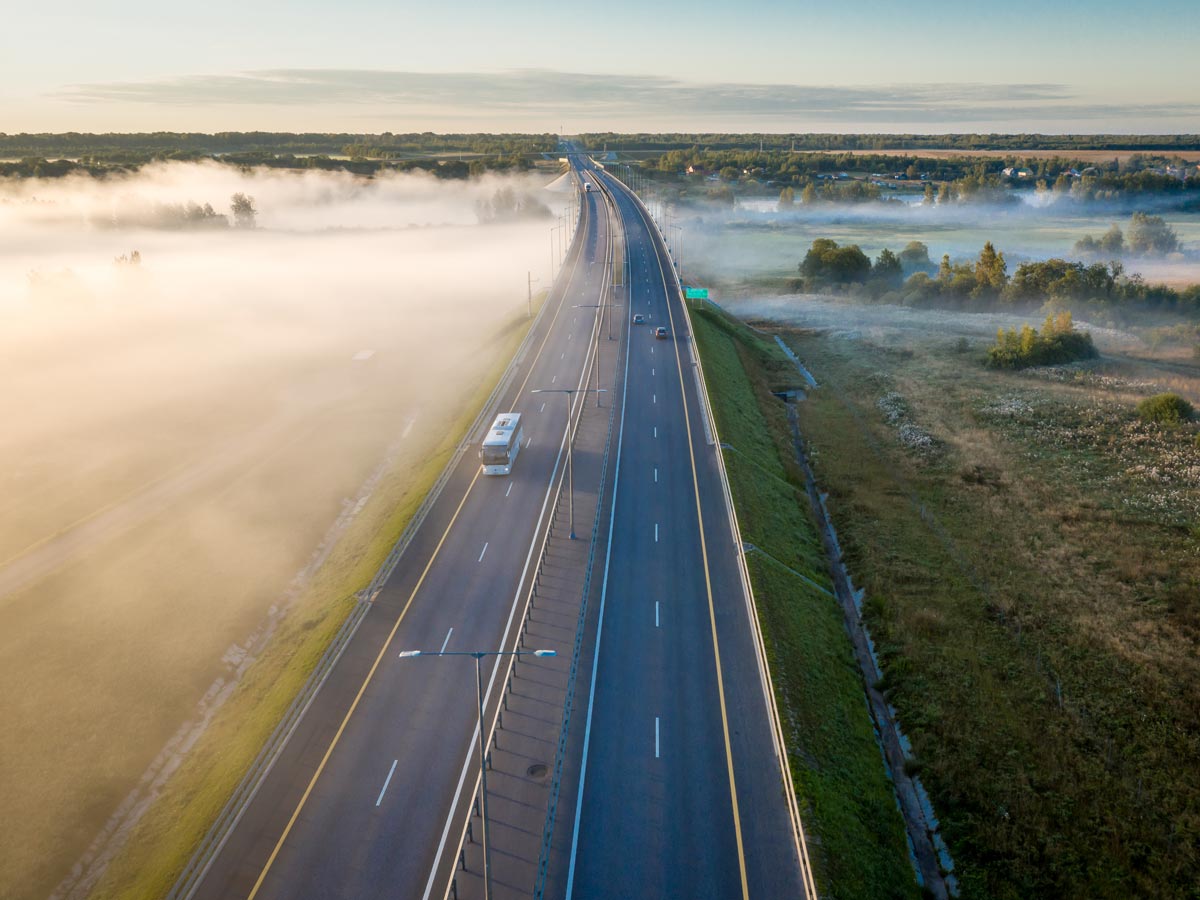Transformation through collaboration: Connections for a shared world
Innovation Issue 37: Fall 2022
Finding on-demand transit solutions for low-density areas
Urban Futures
Finding on-demand transit solutions for low-density areas
As populations grow in small cities and towns, so does the need for reliable, efficient and cost-effective public transit systems. The traditional public transit model used in larger cities with a fleet of buses and subway cars moving residents along designated routes doesn’t always serve the needs of residents in low-density areas.
It’s a problem that Toronto Metropolitan University (TMU) civil engineering professor Bilal Farooq is trying to solve with two research projects exploring on-demand transit (ODT), which moves away from fixed routes and schedules. One project assesses a pilot in collaboration with the City of Belleville, a city of 49,000 people located halfway between Toronto and Ottawa, and Toronto-based technology startup Pantonium Inc. The other is an analysis of ODT options for the Town of Innisfil, a growing town of 43,000 residents located north of the Greater Toronto Area, in collaboration with Uber.
“Municipalities like Innisfil and Belleville and others in Canada, they approach this problem in a unique way,” said professor Farooq, who is also the Canada Research Chair in Disruptive Transportation Technologies and Services. “Instead of focusing on providing low-frequency conventional transit, they looked at how they can use on-demand mobility to offer a public transit service that provides a high level of service.”
In 2017, Professor Farooq and PhD student Nael Alsaleh were connected by Pantonium Inc. to a pilot project for an on-demand bus service in the City of Belleville. The project used Belleville’s existing bus fleet and Pantonium Inc.’s on-demand mobility platform to replace an existing fixed route service at night. The researchers assessed the pilot to understand and predict spatiotemporal patterns of demand from users and vehicles. They found the ODT routes varied greatly from the original fixed route and increased the coverage area by 70 per cent while reducing vehicle mileage by 30 per cent. Ridership also increased under the on-demand model by 30 per cent. The researchers quantified the data and developed mathematical behavioural models to predict demand for different time increments, such as 15 minutes, 30 minutes or one hour, helping Belleville further optimize their service.
“Most of our findings were very helpful in terms of Belleville improving their service as they grow,” said professor Farooq, whose team made several recommendations from the research, including proactively locating buses in neighbourhoods with high activity centres like shopping malls, and altering fleet and vehicle size in relation to real-time demand. Belleville switched all its routes to ODT during the first year of the pandemic when ridership temporarily declined and now continues to offer a mix of fixed-route service during the day and ODT at night.
The Town of Innisfil project was an opportunity to further study ODT, this time looking at a crowdsourced model via a subsidized version of Uber Pool that serves as Innisfil’s public transit. Uber connected professor Farooq and Alsaleh to Innisfil in 2019, where the three groups worked together to explore which on-demand transit model would work best for various levels of demand.
“In these studies, we were interested in knowing which model was the optimal model and why. Was it transferable or were the circumstances of each location defining the model?” said professor Farooq. “Having the kind of data and access that we had, especially in Innisfil, that’s exactly what we looked at.”
To test different ODT system designs for overall efficiency, professor Farooq and Alsaleh developed a microsimulation model to replicate different levels of service in relation to demand. Factors included walking time, waiting time, in-vehicle time, vehicle kilometres per passenger, net cost, sustainability and resilience of service, and social equity and inclusion.
The researchers found that as the population continues to grow in Innisfil, a hybrid model may be more beneficial. A hybrid model would combine crowdsourced transit (Uber Pool) with either ODT using a dedicated fleet or fixed-route transit to maintain the same level of service while reducing vehicle mileage and GHG emissions by up to 33 per cent. Innisfil will assess the suggestion for a hybrid model in their Transit Master Plan and with potential service partners.
In the meantime, the Innisfil research project continues with professor Farooq and Alsaleh developing a survey to learn more about Innisfil’s transit users and their preferences. They will also explore the impact of adding e-scooters, e-bikes and autonomous vehicles to Innisfil’s mobility plan.
Instead of focusing on providing low-frequency conventional transit, they looked at how they can use on-demand mobility to offer a public transit service that provides a high level of service.

Read “Spatio-temporal Analysis of On-demand Transit: A Case Study of Belleville, Canada (external link, opens in new window) ” in the journal Transportation Research Part A: Policy and Practice.
Read (PDF file) Exploring On-demand Transit Options for The Town of Innisfil (external link, opens in new window) , a report prepared for the Town of Innisfil.
Funding for the Innisfil and Belleville projects was provided by the Town of Innisfil, the Canadian Urban Transit Research & Innovation Consortium and the Canada Research Chairs program.
